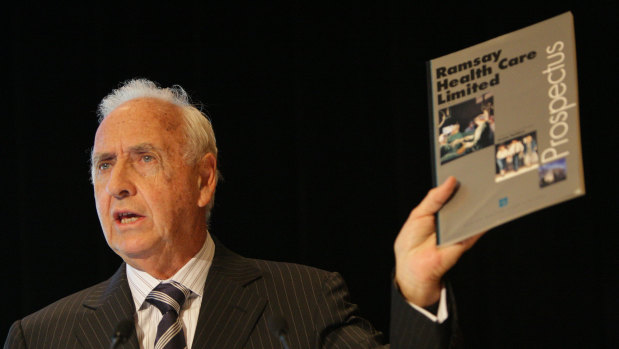This was published 4 years ago
Opinion
'Not quite what we expected': Ramsay Centre now a lifeboat for humanities going under
By Simon Haines
Human history is “a race between education and catastrophe”, according to H. G. Wells. If the humanities sector is about education, not just training, then we mess with it at our peril.
It seems pretty clear the government’s undergraduate fee changes will adversely affect the sector. The law of unintended consequences will no doubt play its part, as it always does when governments attempt workforce planning, or "picking winners", instead of leaving things to the market. But the sudden plunge in high-margin overseas student enrolments was already having a major and disproportionate effect not only on commerce and business faculties, where most international students gravitate, but on the unprofitable humanities as well, through the loss of internal cross-subsidies from those other faculties. This new price shock will almost certainly make things worse. Even if the decisions of students and their families are cushioned by HECS, and even if enrolments in English and languages rise, it’s hard not to conclude that in the sector as a whole they will fall, perhaps drastically.

Paul Ramsay's bequest means the centre he established is one of the few places pumping money into the humanities.Credit: Peter Braig
Of course, this new fee policy is designed to send a clear vocational signal in a time of recession –indeed it is meant to help alleviate the recession, which in itself is a good intention. But we know where roads paved with good intentions often lead. The Dawkins reforms of the late 1980s had the effect of lowering the status of VET (vocational education and training) relative to arts degrees, with lasting ill consequences; this reform is intended to have the opposite effect. STEM and teaching degrees mean jobs: they represent professional skills training, if not technically VET. As for philosophy, history, classics: these are not what we need just now (or ever?). That’s the messaging; that’s the intention.
Thanks to the strange combination of a global pandemic and the generosity of a great philanthropist, therefore, the Ramsay Centre now finds itself as the only significant source of growth in the sector, possibly for years to come. Thirty new staff hires and hundreds of student scholarships across three universities over at least eight years are beginning to look like not just a lifeline but the whole darn lifeboat. Not quite what we expected when we set out on this voyage three years ago.
In these strange new circumstances, however, our two-part message for government, business and the universities has not changed. If anything it seems even more relevant now than it did in 2017.
The first part of the message is that the humanities are critically important not just to our economy but to our lives, our very civilisation. We defund and devalue them at our peril. As far as the economy is concerned, they are essential engines of creativity and strategic thinking. Steve Jobs famously said: “It is in Apple’s DNA that technology alone is not enough – it’s technology married with liberal arts, married with the humanities, that yields us the results that make our heart sing.” The world’s three greatest concentrations of hi-tech innovation are Silicon Valley, the Boston Ring, and the Oxford-Cambridge-London triangle; the North Carolina triangle is catching up fast. All are dominated not just by major agglomerations of techies, but by world-leading humanities institutions: Stanford, Berkeley, Harvard, UNC, Duke, Oxford, Cambridge. What are we doing to emulate these innovation hubs?
The more AI-driven the global economy becomes, the more we need HI. This means strategic, creative thinking with an educated awareness of the human dimension. As employees move up the ladder in public or private sector institutions, they increasingly need the capacity to absorb large amounts of complex human (not just technical) information, and to communicate clearly and creatively what they have absorbed. At the corporate coalface, in the boardroom, in policy formulation, in cabinet committees, this nearly always happens, in the end, in language, not numbers. Persuasiveness, finding the right words, presentational sophistication, well-articulated strategy: this nearly always means language. “Criticism” in its true sense means “judgment”. “Critical thinking” is the exercise of strategic common sense based on the assimilation and representation of complex arguments and concepts: especially in written form. Reading a lot of complex texts in small argumentative groups is a very good way to learn these skills.
It’s also how you learn about our civilisation. Many of its classic texts are complex exercises in open-minded, truly critical thinking-in-language (though let’s not forget the art and music!). But collectively, and read for themselves, without prejudice, they also help undergraduates discover who they are (education in its true sense), while also learning who we all are: our history (warts and all), our philosophy, our literature, our science.
The second and briefer part of our message is that the sector has not done enough in recent decades to persuade the wider community that it is still doing these vital educational things: still protecting us from catastrophe, as Wells would say. Lectures of 200-plus, tutorials of 40, remote professors, harassed sessionals doing the actual teaching, themed courses constantly recycling a limited range of trendy topics, the whole system palpably prioritising research over education: a sector regularly advocating its own version of “critical thinking” has left itself vulnerable to just that.
Professor Simon Haines is chief executive officer of the Ramsay Centre for Western Civilisation and former head of the school of humanities at ANU.